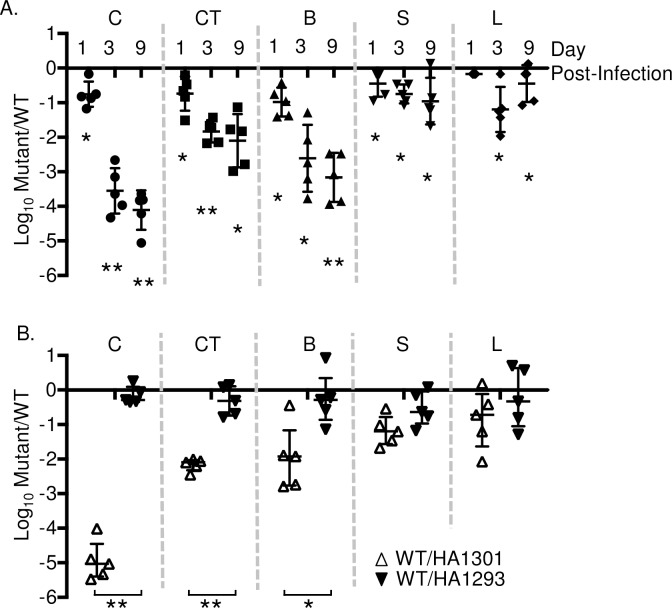Fig 2. ΔpyrE mutant colonizes 4-day-old chicks poorly in competitive infection with wild type.
(A) Fifteen 4-day-old chicks were infected orally with 1x109 CFU of equal mixture of ΔpyrE and isogenic wild type, HA431 (HA420 ΔphoN::KanR). At day 1, 3, and 9 post-infection, 5 chicks were humanely euthanized, ceca (C), cecal tonsil (CT), bursa (B), spleen (S), and liver (L) were excised, homogenized in PBS, and plated on LB agar plate supplemented with kanamycin and XP to enumerate the colony forming units (CFU) for ΔpyrE and wild type respectively. (B) Return of wild type copy of pyrE in trans restores colonization to the level of wild type during competitive infection with wild type, HA877 (HA420 ΔphoN::NalR pWSK29) and either HA1301(ΔpyrE::KanR pWSK29) (open trianges) or HA1293 (ΔpyrE::KanR pWSK29::STM3733) (filled trianges) at day 9 post-infection. Infections were performed as described in (A). Data are shown as the ratio of mutant to wild type recovered from each tissue normalized to the input ratio and converted logarithmically. Horizontal bars denote the mean, and error bars denote the standard deviation. Statistical significance was determined by using a Student’s 2-tail t-test with p < 0.05 (*), p< 0.001 (**).

